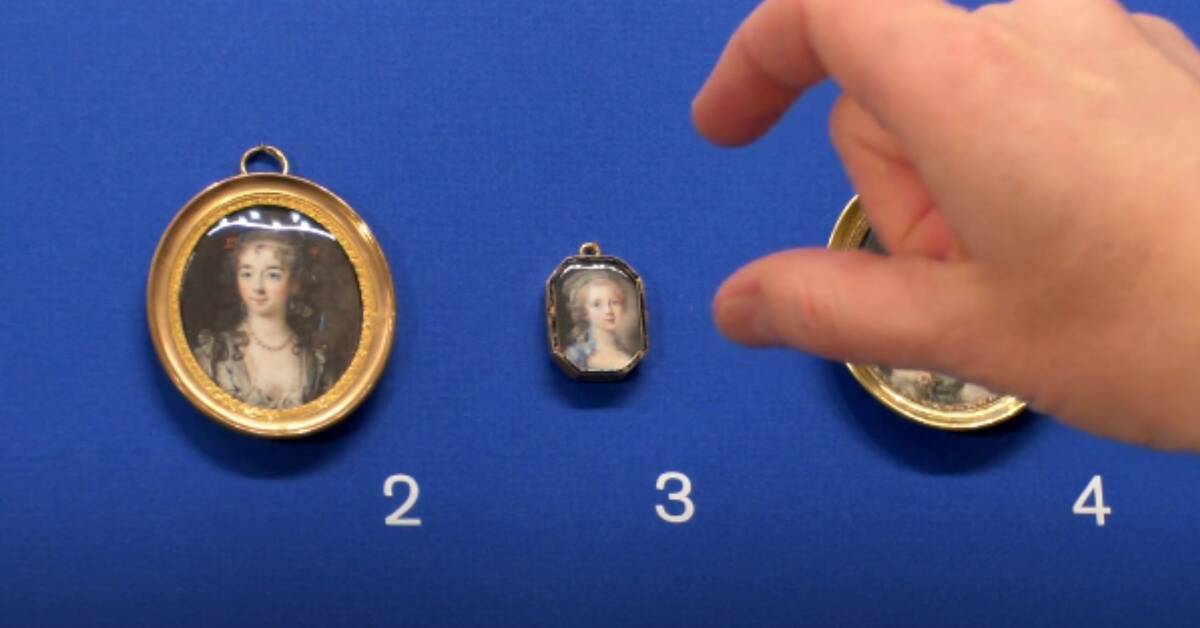Peter Adolf Hall, or Pierre Adolphe as he was called in French, must have been something of a social genius. After studying in Stockholm and Germany, he lands in Paris where he makes a comet career. Soon he is commissioned to paint members of the royal family.
Portrait miniatures were often painted to be worn close to the body. Some are so small that they could fit on a ring. Often they were made as gifts, as evidence of important relationships or as signs of closeness to influential people.
The miniature portraits were a way to bridge great distances. Today we can see our friends and acquaintances within the small confines of the mobile phone, we see how children grow and adults age. But the miniature portraits don't age, and the painted people appear in the way that dresses them best. Some charm with a smile, others hold important letters in their hand. Peter Adolf Hall's painting is both vivid and dreamy, and the models seem to be at ease. Perhaps they relished the idea of ending up in pictures that would be preserved for the future. Smile!
Nationalmuseum has the world's largest collection of miniatures, but here a small selection is shown in a fairly simple hanging. You can't get very close to the works and you can see them almost most easily in a digital screen where you can zoom in. But to follow a miniature portrait is to see how the story hangs together. Who was related to whom, and how a small portrait has traveled across revolutions in different countries via art dealers, manic collectors and up to the present day.
Perhaps it is a mystery that Peter Adolf Hall came to Paris and made such a smash hit with his skill. Perhaps one day we will find out if he had some hitherto unknown teacher or if he single-handedly revolutionized miniature painting. But the really remarkable thing is to stand face to face with a little miniature person, like a tiny, tiny doll, looking back out of the painting and hopefully wondering: what is it now that I've ended up in?

